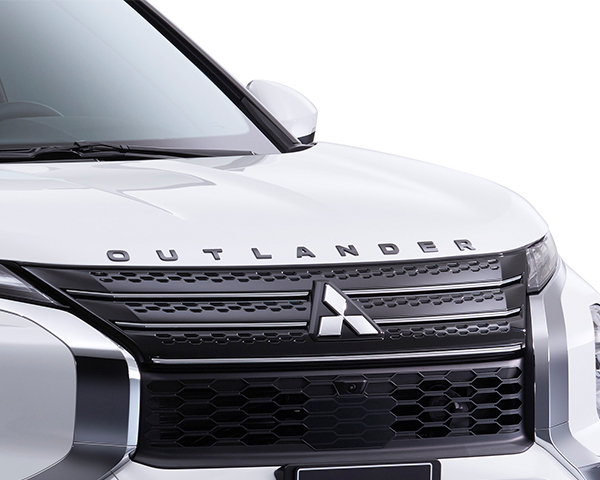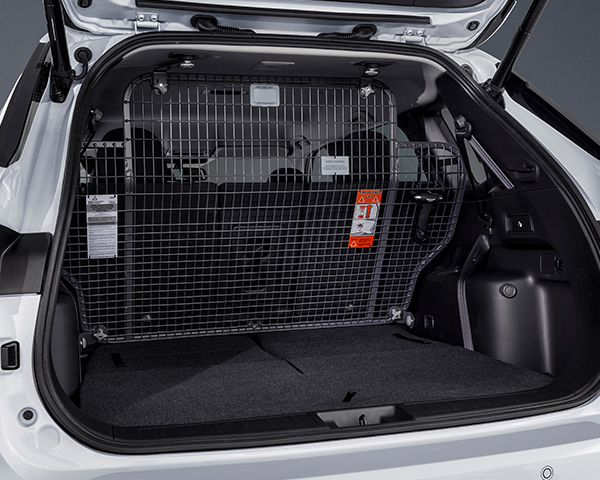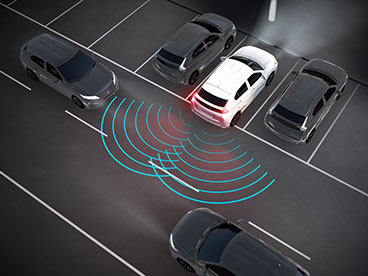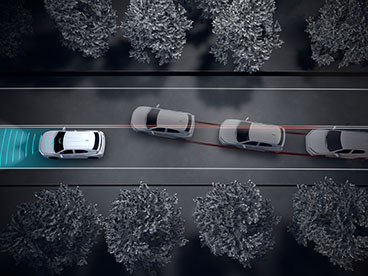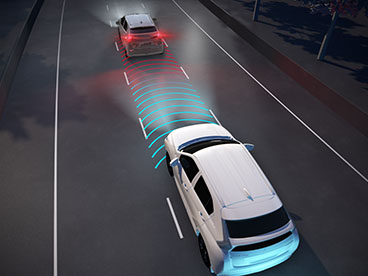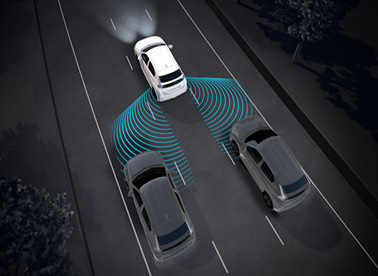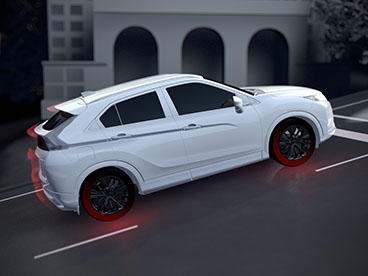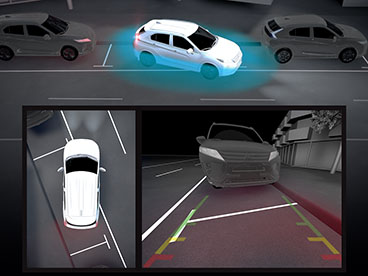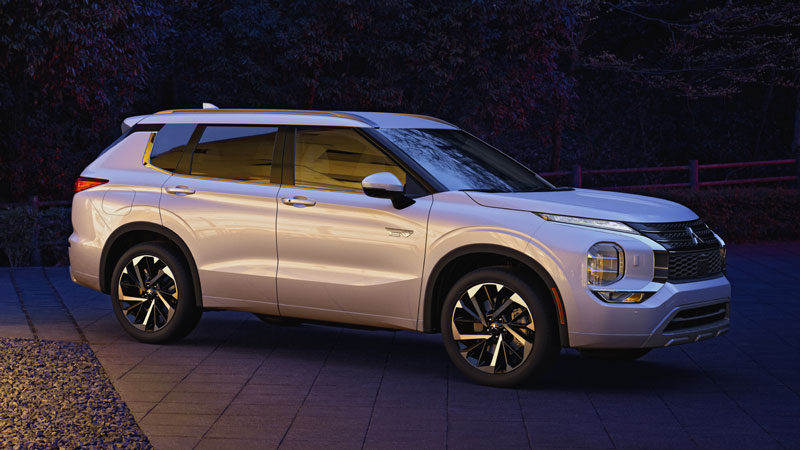Outlander
Plug-In Hybrid EV
OVERVIEW
The EV Superpower
The stunning Outlander Plug-in Hybrid EV delivers eco-friendly efficiency plus pure performance on and off the road.
Its highly advanced powertrain combines twin electric motors and a hybrid petrol engine to give you the best of both worlds.
With greater battery capacity (20.0kWh) and a larger fuel tank (56L), the Outlander Plug-in Hybrid EV now has even more power and range, wherever and whenever you need it.

At a glance
-
Electric Range O1
84km
-
Hybrid Petrol Power
For longer road trips
-
Larger Battery
20.0kWh
-
Charge Anywhere
Multiple Charging Options
-
Super-All Wheel Control
For off road adventures
PLUG-IN HYBRID EV RANGE
Make Your Mark.

Key features
- 5 Seats
- 2.4L Multipoint Injection Petrol Engine
- Plug-in Hybrid EV Powertrain
- Super-All Wheel Control
- 7 Drive Modes
- 12.3” Digital Driver Display
- MiTEC Safety Technology
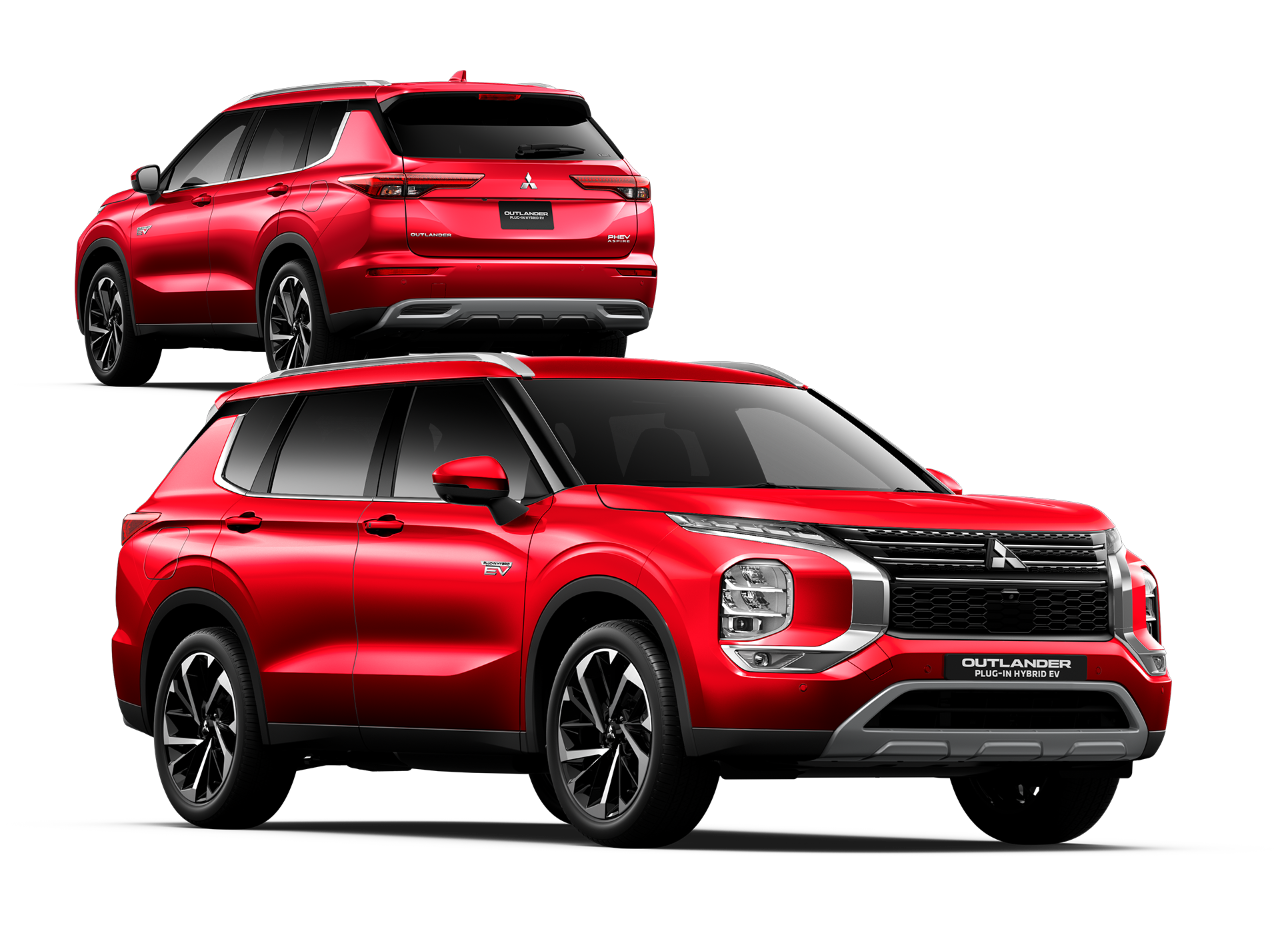
Key features
- 5 Seats
- 2.4L Multipoint Injection Petrol Engine
- Plug-in Hybrid EV Powertrain
- 20” Two-Tone Alloy Wheels
- Wireless smartphone charging
- 240v/1500W Power Outlets
- MiTEC Safety Technology
- Super-All Wheel Control
- 12.3” Digital Driver Display

Key features
- 5 + 2 Seat Flexibility
- 2.4L Multipoint Injection Petrol Engine
- Plug-in Hybrid EV Powertrain
- Leather Appointed Seat Trim
- Panoramic sunroof
- Heated Seats
- BOSE Premium Sound System
- 240v/1500W Power Outlets
- MiTEC Safety Technology
- Super-All Wheel Control
- 7 Drive Modes
- 12.3” Digital Driver Display
- 20” Two-Tone Alloy Wheels
- Wireless smartphone charging
- MI-PILOT

Key features
- 5 + 2 Seat Flexibility
- 2.4L Multipoint Injection Petrol Engine
- Plug-in Hybrid EV Powertrain
- Heated Massage Seats
- Two-tone High-Grade Leather Appointed Seat Trim
- Panoramic sunroof
- BOSE Premium Sound System
- 240v/1500W Power Outlets
- MiTEC Safety Technology
- Super-All Wheel Control
- 7 Drive Modes
- 12.3” Digital Driver Display
- 20” Two-Tone Alloy Wheels
- Wireless smartphone charging
- MI-PILOT

Key features
- 5 + 2 Seat Flexibility
- 2.4L Multipoint Injection Petrol Engine
- Plug-in Hybrid EV Powertrain
- Heated Massage Seats
- Panoramic sunroof
- BOSE Premium Sound System
- 240v/1500W Power Outlets
- MiTEC Safety Technology
- Super-All Wheel Control
- 7 Drive Modes
- 12.3” Digital Driver Display
- Wireless smartphone charging
- MI-PILOT
- Black 20" Alloy wheels
- Bonnet Emblem 'Outlander'

More range. More choice. Mitsubishi Plug-in Hybrid EV.
Leave range anxiety behind
With a fully electric range of 84kmsO2 backed by the security of a hybrid petrol engine, you can rest assured the Outlander Plug-in Hybrid EV will get you there, and back.
Flexible charging options
Outlander Plug-in Hybrid EV can fast charge with a standard type 2 AC, or CHAdeMO DC connector at available charging stations. Plug into any power outlet, or charge as you drive with regenerative braking.
Twin motors. Twice the fun.
Two electric motors deliver incredible amounts of torque for lightning fast acceleration and an exhilarating driving experience. One taste and there’s no turning back!
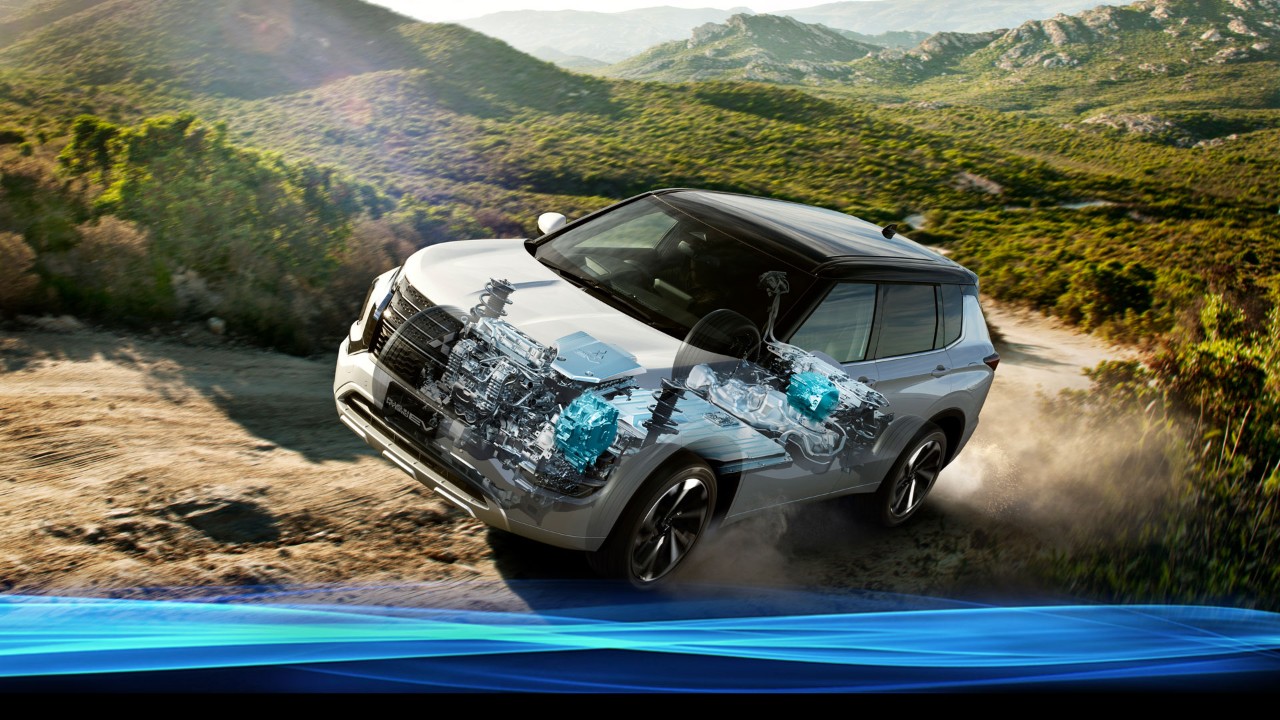
Plug-in
Hybrid EV
Powering the next generation of Australian adventures.
The powerful Outlander Plug-in Hybrid EV puts you in charge with twin electric motors for pure EV driving around town plus a hybrid petrol engine for complete confidence on great Australian road trips.
It seamlessly switches between electric and hybrid petrol power for on-demand performance and recharges while you drive using regenerative braking technology.


Lead the charge.
Outlander Plug-in Hybrid EV next generation battery technology and electric motors now deliver up to 54% more electric range O1, so you can go even further with zero tailpipe emissions. Plus, you can use hybrid petrol power for longer road trips with remarkable fuel efficiency.
Mitsubishi Plug-in Hybrid EVs offer everything their petrol-only counterparts do, they just do it with the added option of electric power. With a class leading 84km all electric range O2 plus the long range reassurance of a hybrid petrol engine you’ve got all bases covered.
EV power. Pure performance.
The Outlander Plug-in Hybrid EV system automatically switches between electric and hybrid petrol power to deliver incredible on-demand performance and outstanding efficiency.
EV Mode
Quiet and exceptionally clean, EV driving is perfect for low to medium speeds in urban areas.

Series Hybrid Mode
When accelerating or climbing hills, the hybrid petrol engine can be used to generate additional power while the vehicle runs on motor power.

Parallel Hybrid Mode
For high-speed driving such as overtaking vehicles on the highway, the vehicle runs on engine power while being assisted by the electric motor.

Stay in Charge
Lightning Fast Charging
Quickly recharge your Outlander Plug-in Hybrid EV to 80% capacity in as little as 38 minutes using a public rapid recharging station.
Charge Anywhere
Plug into any standard power point to charge your Outlander Plug-in Hybrid EV in approximately 9.5 hours, or in 6.5 hours using a home or public charging device (EVSE)
Regenerative Power
In addition to plug-in top ups, your Outlander Plug-in Hybrid EV will continue to generate power during regular driving, whether you’re using the electric motor or hybrid petrol engine.
Zero tailpipe emissions in EV mode.
The Outlander Plug-in Hybrid EV has a fully electric range of 84kmO2, more than enough for the average daily commute – meaning that you can go about your day knowing that you’re not producing any tailpipe emissions on your commute.


Go off the grid, and feed back into it.
Going solar? Prefer off-peak power prices? Bi-directional charging abilityO3 means you can get the most out of your energy.
When you’re not out exploring, the Outlander Plug-in Hybrid EV can act as an additional battery cell for your homeO3. It can draw power from your own solar system, or the grid during low cost hours, and then store that energy on boardO3. During peak times you can draw on power saved in the Outlander Plug-in Hybrid EV’s battery and use it for your home, offsetting your electricity bills. Any power you don’t use can be fed back into the grid to offset your bills.O3
Power Backup
Using bi-directional charging technology, the Outlander Plug-in Hybrid EV’s high capacity battery can power your home for days during an outage or an emergencyO3. Unused energy captured by regenerative braking while driving can also be sold back into the gridO3.

Learn more about Outlander Plug-in Hybrid EV
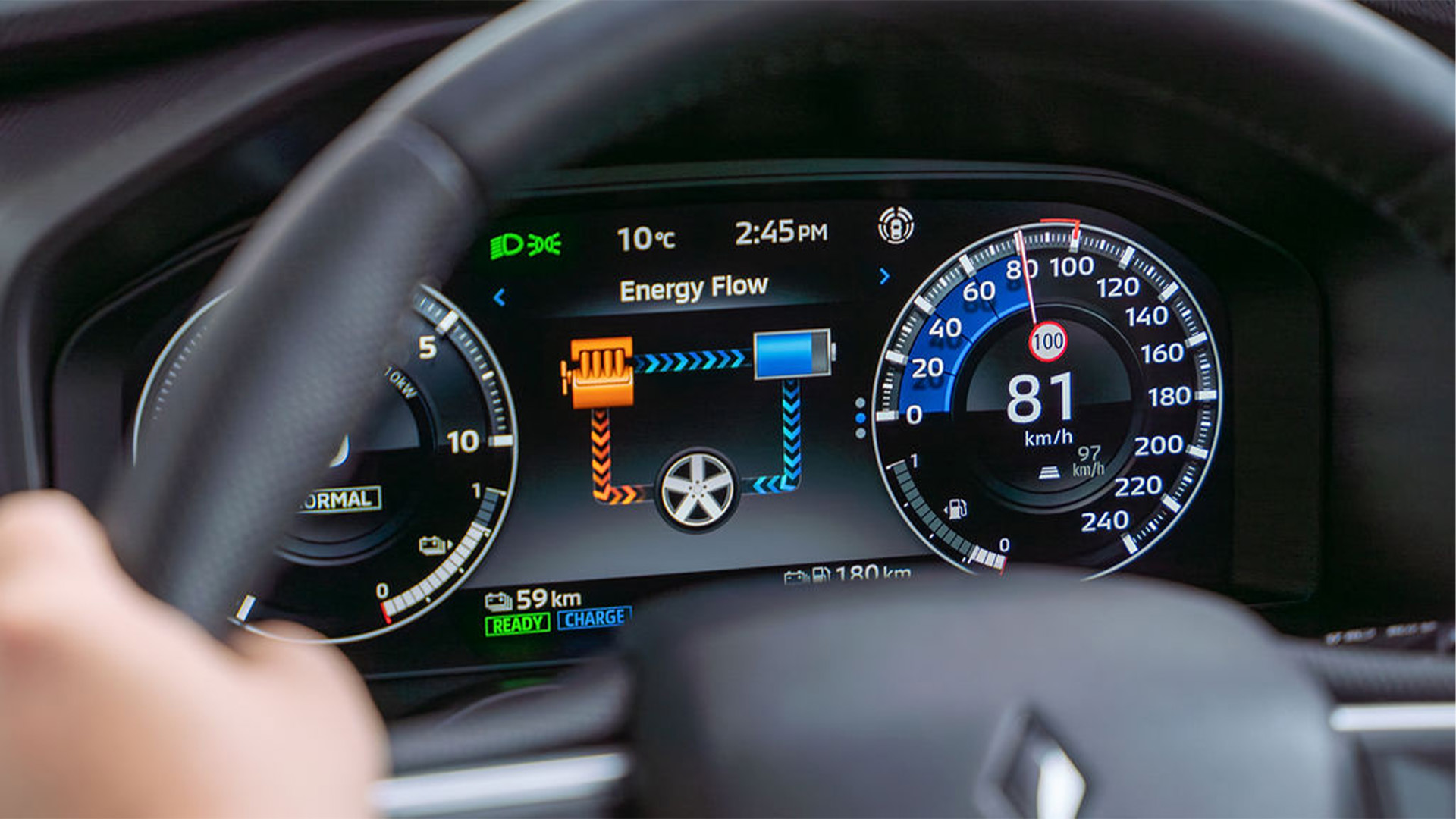
A Perfect Blend of Style and Innovation
Discover why the Outlander Plug-in Hybrid EV is our most advanced model to date. Designed with cutting-edge twin-motor hybrid technology, featuring tri-zone climate system and impressive interior and exterior styling.

Versatility Unleashed
The Outlander Plug-in Hybrid EV combines practicality with cutting-edge technology. Explore it's spacious cargo area, advanced infotainment system and on board AC power outlet O10 (combined max 1500 watts).

Exceptional Value and Peace of Mind
The Outlander Plug-in Hybrid EV is affordable to buy and own. Learn more about the advantages of owning a Plug-in Hybrid EV, as well as, 10 Years Capped Price Servicing⋄2 and 10 Years Warranty⋄1.
Outlander Plug-In Hybrid EV Q&A
Want to know more about the Outlander Plug-in Hybrid EV? Join Tim Clarke, also known as PHEV Yoda, in answering some common questions about this advanced vehicle.

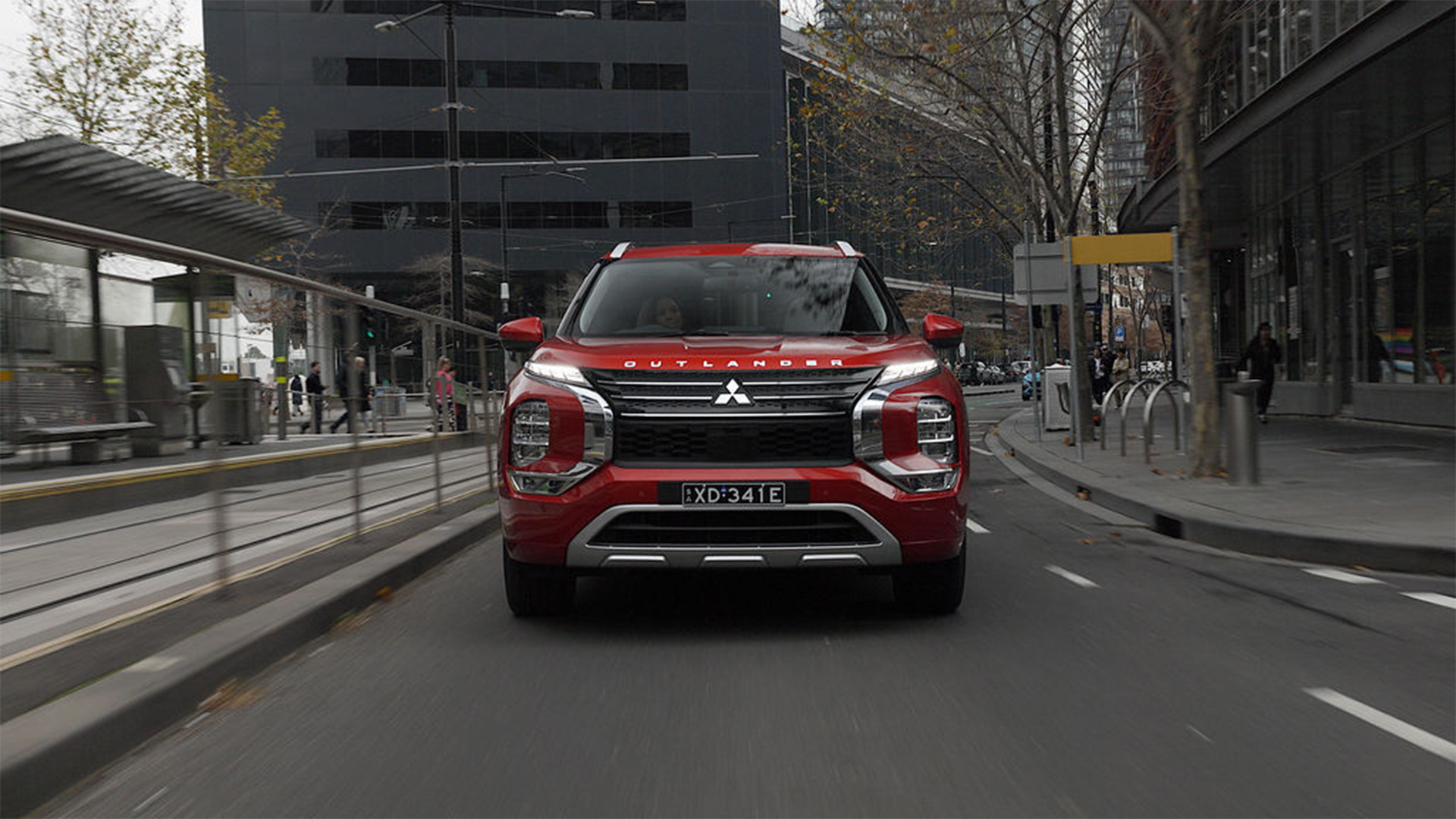

Design &
Interior

Make your presence known.
The daring and distinct Outlander Plug-in Hybrid EV is no wallflower. It makes a strong, dignified entrance with confident sculpted lines, muscular flared fenders and broad shoulders. It’s bold front dynamic shield and streamlined rear spoiler not only turn heads, they also deliver greater performance and aerodynamics.
Steal the limelight.
It’s your time to shine. Sharp and slender daytime running lights crown a full LED headlight cluster that’s strategically positioned to provide greater visibility across long distances and improved recognition by oncoming vehicles.
Horizontally extended rear LED lights with T-shaped ends delineate the horizon line and highlight the Outlander Plug-in Hybrid EV’s distinctive shoulders.

Show them how you roll.
Large diameter, dual tone 20-inch machined alloy wheels bolster the Outlander Plug-in Hybrid EV’s Aspire, Exceed and Exceed Tourer’s impressive stance.
 Exceed Tourer Shown
Exceed Tourer Shown
Live life large.
Once you ease into the Outlander Plug-in Hybrid EV’s spacious and exceptionally crafted cabin, you’ll instantly relax and come out of your shell. Fastidious attention to detail has been paid to every nuance and feature, right down to the knobs and dials.
Ergonomic elegance keeps everything within arm’s reach, while a heated multifunction steering wheel keeps you in control.
Contrasting two tone leather trimO15, striking aluminium instrument panel accentsO11 and matt carbon trim make a handsome statement in style.
 Exceed Tourer Shown
Exceed Tourer Shown
 Exceed shown
Exceed shown
Own your space.
Sometimes you’re the only person you need to impress. The Outlander Plug-in Hybrid EV’s superior combination of exquisite craftsmanship and advanced technology will make you comfortable with yourself wherever you are. An 8-way power adjustable driver seatO10 can be customised and memorised to embrace any body and height.
Double stitched quilted leather upholsteryO11 coalesces with embedded comfort features including a massage functionO15 in both front seats, so you always arrive relaxed. Heated front seatsO11 provide welcome winter warmth, while independent multi-zone climate control allows everyone to create their own personal oasis year round.




Welcome to the fold.
Change things up. With 5+2 seat flexibility, there’s always ample room for busy weeks and even bigger weekends away. All seats can recline for added comfort, while the slide adjustable 40:20:40 split second row and rear third row can fold fully forward to create a multitude of versatile passenger and cargo configurations. All rear seats can lie flat to create a capacious luggage area and up to 2000 litres of cargo space.

Flaunt that auto tailgate.
Live it up without lifting it up. As outrageously convenient as it is impressive, the Outlander Plug-in Hybrid EV’s automatic rear tailgateO11 can be opened simply by placing a foot under its rear bumper. Its lift height is adjustable to prevent contact with low garage doors and ceilings, while a wider rear frame and deeper cavity easily accommodate bulky luggage and equipment.
Always open minded.
The Outlander Plug-in Hybrid EV’s large and wide panoramic sunroofO11 goes above and beyond. One touch tilt and slide operation opens up the interior cabin to the great outdoors, creating an even greater sense of vast, natural space.
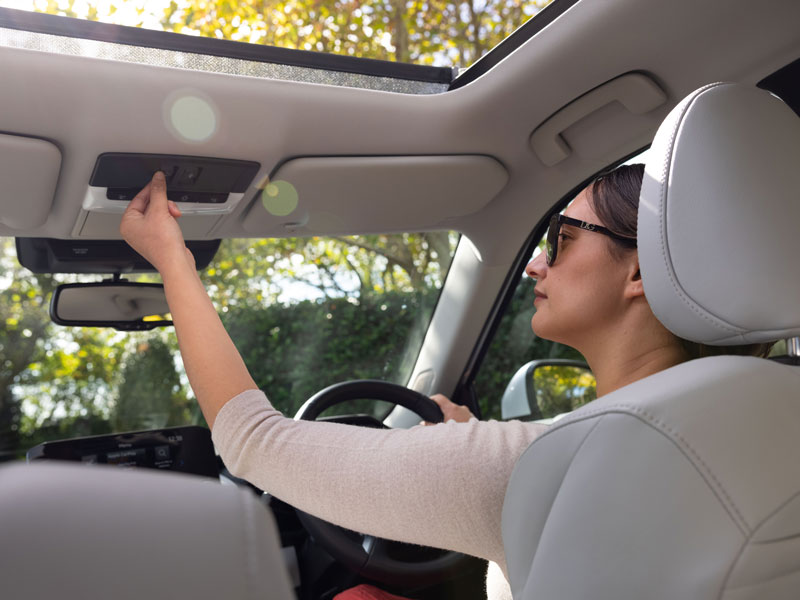
Accessories
Make your mark.
Add a personal touch and make the Outlander Plug-in Hybrid EV truly your own. Mitsubishi genuine accessories and packs let you tailor your ride inside and out, making it as individual as you.

Safety &
Technology
Go beyond boundaries.

Forge your own path
Outlander’s Super-All Wheel Control system integrates Mitsubishi’s revolutionary rally bred full-time, 4WD based technology. Featuring direct coupling with quick torque response, it optimises speed and braking force at each wheel to deliver more power, better cornering and greater stability wherever you are.
Forge your own path with seven available drive modes giving you the freedom to drive on all kinds of terrains, in almost all conditions.
Power Mode
Delivers the fastest acceleration response for overtaking.
Normal mode
Optimal performance for everyday use.
Eco Mode
Provides ecological and economic driving.
Tarmac Mode
For agile and fun driving on dry sealed surfaces.
Gravel Mode
Superior handling on loose road surfaces for maximum control.
Snow Mode
Enhances stability on slippery or icy road conditions.
Mud Mode
Provides powerful all wheel driving in muddy conditions.


Performance on every stage.
Whether you’re using electric, hybrid or a combination of both, on-demand performance is always at hand.
The Outlander Plug-in Hybrid EV is equipped with a lively 4-cylinder 2.4L hybrid petrol engine for greater fuel economy and range. When engaged, it can drive the front wheels and supply any excess electricity generated back into the lithium-ion battery pack.
Pace and prowess when you need it, power in reserve when you don’t.

Out and about. In the know.
A high resolution widescreen 12.3 inch full digital driver display continuously updates the status of your Outlander and can be customised to showcase navigation, Super-All Wheel Control information, audio entertainment options, and many more important details.
The transparent driver’s 10.8 inch head up displayO10 can be configured to provide additional information in clear view of the road ahead.
March to the beat of your own playlists.
Go loud and proud. Sound insulating double pane windows and windshields ensure silence is golden, so you can hear every note played through the Outlander Plug-in Hybrid EV’s incredible nine speaker Bose sound systemO11.

Well Connected.
The show always goes on with complete Apple CarPlay and Android Auto connectivity. Wireless smartphone chargingO10 means the entertainment or handsfree conversations never have to stop.
Interested in Outlander Plug-in Hybrid EV?
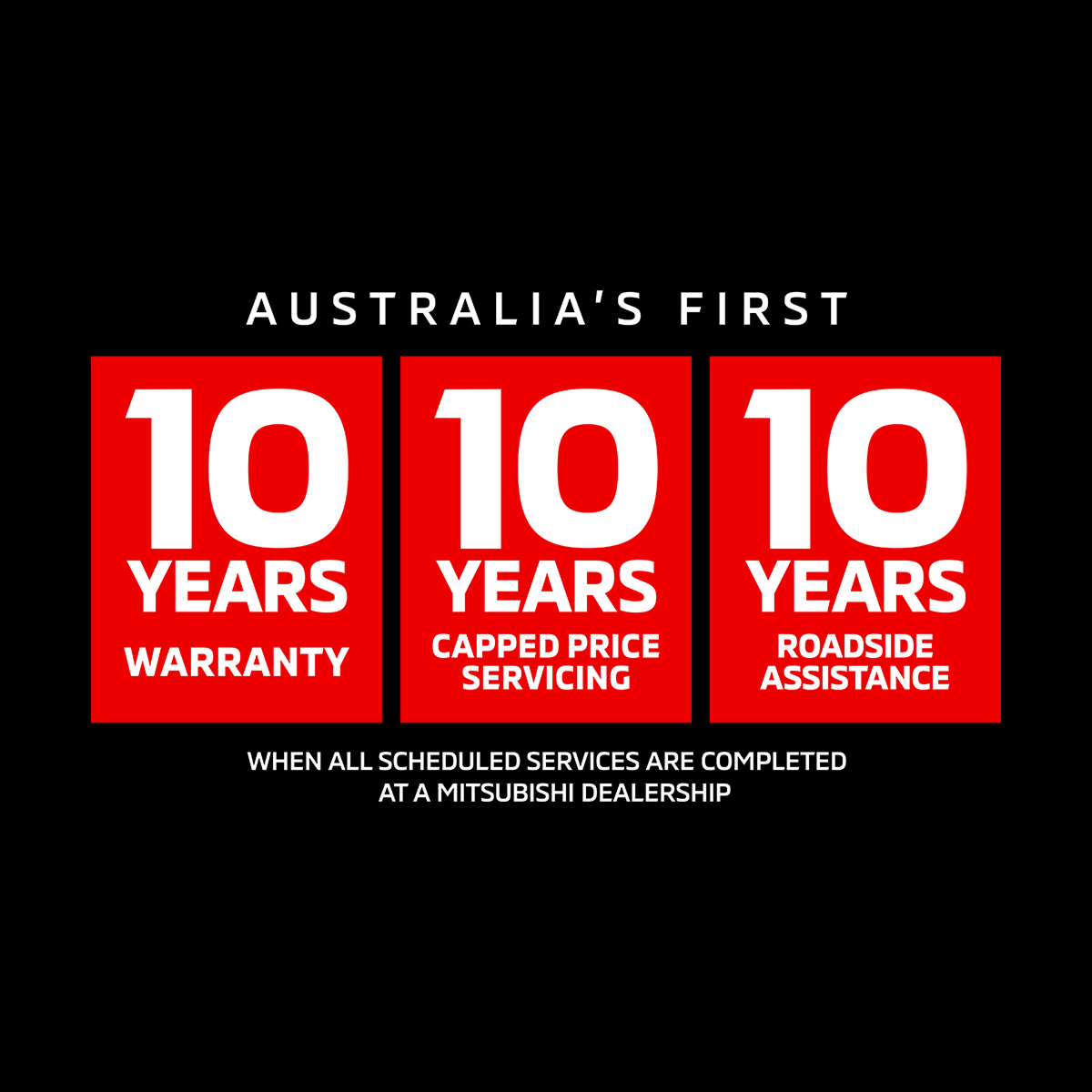
You Can Count On Us.
We're here for the long run. That's why Mitsubishi offers Australia’s first 10 Year Warranty with 10 Years Capped Price Servicing, plus 10 Years Roadside Assistance. It’s a guarantee of the integrity and service standards that set us apart from other automotive manufacturers. The Mitsubishi Diamond Advantage program is our commitment to you for complete peace of mind. Every Mitsubishi is built and backed for the time of your life. You can count on it.
- 10 Year Warranty⋄1
- 10 Years Capped Price Servicing⋄2
- 10 Years Roadside Assistance⋄3
Disclaimers
-
O1
Based on sample vehicle tested in accordance with ADR 81/02. Actual results will vary depending on traffic conditions, vehicle condition and driving style. Lithium-ion cells degrade over time, and any decrease in battery capacity will reduce electric range.
-
O3
With an approved Bi-directional EVSE, sold separately to the vehicle.
-
O10
Not available on ES models
-
O11
Exceed & Exceed Tourer only
-
O12
Please drive safely and never rely solely on these systems while driving. Drivers are fully responsible for their own safe driving.
-
O13
The detection and control capabilities of FCM are supplementary only and do not prevent collisions in every situation. Please read the operation manual carefully and be aware of these limitations.
-
O14
The detection and control capabilities of BSW and LCA are supplementary only and do not warn you of vehicles in blind spots in every situation. BSW and LCA may not activate in some situations.
-
O15
Exceed Tourer model only
-
O16
The Lane Keep Assist (LKA) is not a replacement for proper driving procedures and is not designed to correct careless, inattentive or absentminded driving. The Lane Keep Assist (LKA) will not always steer the vehicle to keep it in the lane. It is not designed to prevent loss of control. It is the driver’s responsibility to stay alert, drive safely, keep the vehicle in the travelling lane, and be in control of the vehicle at all times.
-
⋄1
Up to 10 years from the date of first registration or 200,000km (whichever comes first) New Vehicle Warranty when all scheduled services are completed within the specified service intervals at a Mitsubishi Dealership. Otherwise, 5 years or 100,000km (whichever comes first) New Vehicle Warranty applies. Eligibility conditions and exclusions apply, full terms and conditions can be found here: https://www.mitsubishi-motors.com.au/owners/diamond-advantage/warranty.html
-
⋄2
10 year or 150,000km (whichever occurs first) Capped Price Servicing, comprised of the first 10 scheduled services (at 15,000km/12 month scheduled intervals). Any non-scheduled service/repair items are at an additional cost. Eligibility conditions and exclusions apply, full terms and conditions can be found here: https://www.mitsubishi-motors.com.au/owners/service/capped-price-servicing.html
-
⋄3
Up to 10 years Roadside Assistance, comprised of an initial 12-month period extended for further periods of 12 months upon completion of each eligible Capped Price Service (up to a maximum of 10 annual Roadside Assistance periods in total). Eligibility conditions and exclusions apply, full terms and conditions can be found here: https://www.mitsubishi-motors.com.au/owners/diamond-advantage/roadside-assist.html
-
^
Information was current at time of publishing and is subject to change. Applicants must have a valid ABN, GST registered for at least 2 years and a business turnover greater than $125,000 per year. All applications are subject to credit approval criteria. Terms and conditions, fees and charges apply. The information is general in nature and does not constitute financial or tax advice, and does not take into account specific financial circumstances, situations or needs. Independent financial and tax advice should be sought. Fees and charges can include vehicle finance, stamp duty, on road costs, fuel management, replacement tyres, scheduled servicing and maintenance, re-registration over the period of the lease, 24-hour roadside assistance, accident management services, toll and infringement management. Fully maintained operating leases are provided by Fleet Partners Pty Limited ABN 63 006 706 832 (FleetPartners). FleetPartners is not related to Mitsubishi Motors Australia Limited.
Lease terms are subject to a maximum limit of 200,000 kilometres over the period of the lease. The vehicle must be returned at the end of the lease term. Fair wear and tear and excess kilometre charges may apply.
Level of outsourcing will depend on optional extras chosen which will vary lease fees. Fleet administration included at no additional cost for the term of the lease; registration and CTP renewals, maintenance & repair approval and payment, replacement tyres (as quoted), roadside assistance, accident management and infringement management. Items that are an additional cost over and above the monthly lease rate are: fuel costs, fuel card management, toll costs, toll management and replacement tyres (if more than quoted limit).




